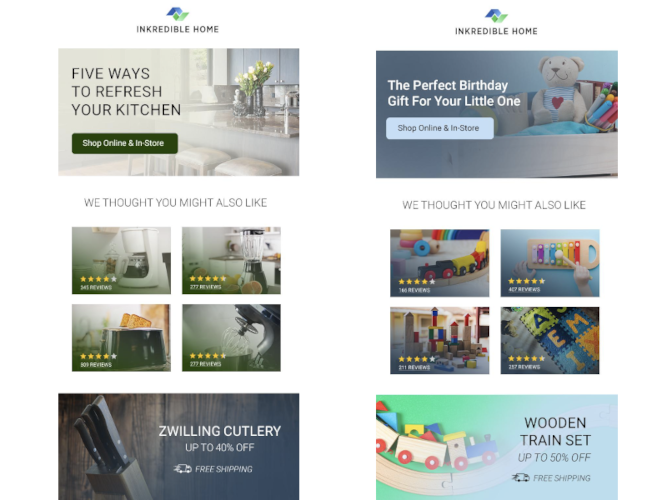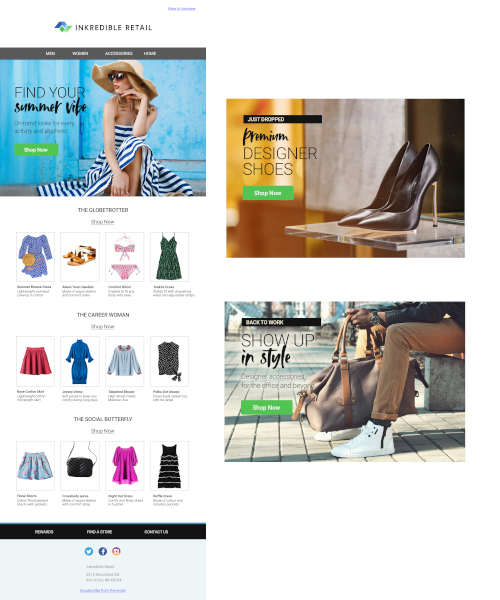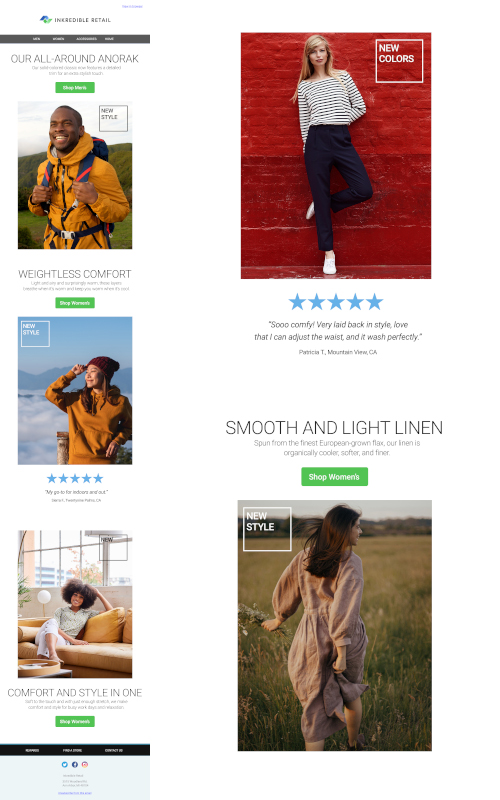Deploying AI for Marketing: Fostering Customers That Last


Variety is the spice of life, especially for customers. If they can depend on a brand for multiple needs, rather than just one, that’s where true loyalty will grow.
Brands know this all too well. While business from their popular flagship product is key, customers who miss out on the rest of their product line-up are liable for an impaired brand experience, ultimately resulting in wavering loyalty and lower lifetime value.
Marketers must expand customer spending patterns by guiding them to higher-value items and exploring additional categories. The best way to make that happen? AI-powered tools and strategies that foster product discovery and expose customers to more of your brand in a way that engages them further.
In this essential guide, discover how to give customers a 360 view of your brand, ultimately creating lasting connections with them that maximize revenue.
What Is Product Discovery?
To begin, it’s important to lay out typical product discovery and explore what’s missing when it comes to contributing to long-term customer growth.
The Definition of Traditional Product Discovery
In traditional product discovery, customers are recommended products either identical or very similar to the items they’ve previously purchased or browsed. While these tactics can be successful in closing today’s sales, two unavoidable issues remain:
-
Traditional product triggers only reinforce what customers are already doing. This can quickly grow repetitive, rather than encouraging them to engage further into your product catalog.
-
Traditional product triggers do not significantly contribute to long-term loyalty because it has a different goal in mind: closing an already near-sale and boosting short-term revenue.
So, while traditional product discovery is an important tactic, it’s not enough to compete for customers’ divided attention in the long run.
The Definition of AI Product Discovery
With AI-powered product discovery, customers are often shown items they haven’t viewed before rather than items they’ve already interacted with—the typical product recommendation. Through the power of machine learning, which uses a process of fishing and testing, marketers can forgo guesswork and be assured that these new items will be a hit with the customer.
The different results of these two approaches are massive. To illustrate the contrast, think of a sales assistant and a personal shopper.
For sales assistants, they’ll rely on their past experiences with other “similar” customers when approaching you. Often, that will result in simply offering the most popular product or harping on any item you’ve expressed a remote interest in. While that sale may close, you haven’t moved much further along in the journey to loyalty, especially when you only associate the brand with a narrow selection of products.
But in the case of personal shoppers, they assist more effectively because they know you well. After asking key questions (fishing), making gentle suggestions with no pressure to purchase (testing), and learning about you over a period of time, they can encourage you to try something new that is simultaneously a perfect fit. Personal shoppers contribute to lasting loyalty because they truly get to know their customers and can correctly predict what they will enjoy.
That’s exactly what AI-powered product discovery accomplishes; it brings the human touch to the digital marketing experience.
How Is AI Used in Marketing New Products?
While the analogy of a personal shopper sounds ideal in theory, how can marketers actually accomplish this within their digital communications? It comes down to reinforcement, content optimization, and purposeful discovery.
Reinforcement Learning With AI
Reinforcement tactics are a method every digital marketer is familiar with. Whether it's messaging to remind customers of your core brand values, automated triggers, or even personalized emails that leverage zero- and first-party data, this method revolves around customers’ latest transactional behavior.
While reinforcement is effective and supports an overall digital marketing strategy, it shouldn’t be the end of the story. Instead, marketers can use these previous interactions as an opportunity to learn about the customer, setting the stage to follow up with highly relevant content.
For instance, if a customer browses a new pair of hiking boots, traditional reinforcement tactics would only send a reminder for that same product. With AI-powered decisioning, the options are endless for what product the tool will suggest to customers; it could even come from a totally different category. But, due to the tool’s analysis of the entire customer story—including previous reinforcement interactions—the AI will correctly infer a fresh product they’re bound to enjoy. Rather than parroting back, the AI can bring something new to the table that surprises and delights.
AI Optimized Content
In the first iteration of email content, every customer would receive the same creative in batch-and-blast emails. Marketers have come a long way since then by including personalized sends where different customers will receive various creative pieces depending on their targeted segment.
AI makes a good thing better when it comes to content, not only for customer engagement but for overall team efficiency. How? By using creative decisioning to determine which content blocks will resonate most with customers. Additionally, creative variations can reorganize raw elements within the block—such as CTAs, image, title, and body copy—to further optimize the content.

Take these two emails from Inkredible Home. While the template is the same with a hero image, recommendations, and a discounted offer, each block is highly personalized to the customer.
For the email on the left, the AI has learned what products in the toys category the customer gravitates towards. Knowing the customer has a little one’s birthday coming up, the AI starts off the email with an eye-catching hero image and quick CTA to shop online or in-person. Underneath, dynamic content blocks are used to recommend products within that same category for some extra inspo.
The highlight of the AI is in the last block: the exclusive deal for cutlery. While kitchen goods and toys aren’t related categories on paper, at this point the AI has learned enough about the customer to infer that cutlery is the next product category that will resonate out of Inkredible Home’s offerings. And with a discount added to entice them, soon the customer will be browsing kitchen goods all on their own.
On the right, we see the opposite scenario; here, the customer is already shopping for kitchen goods. In this case, the hero image is used to promote editorial content, as the AI has learned that this particular customer resonates with curated content to guide buying choices. Beneath the dynamic content blocks showing recommended kitchen products, the AI again veers off the beaten path in the exclusive deal. Here the customer is introduced to the toys category, specifically with the picture of a train. Using machine learning, the AI has successfully determined that this particular toy is the exact catalyst the customer needs to begin product discovery in an entirely new category.
AI Creates Purposeful Discovery
With AI-powered reinforcement and content optimization in your back pocket, creating a purposeful journey of discovery for your customer becomes a breeze. Using these methods empowers marketers to truly get to know their customers at scale and help them discover more about the brand.
Once the brand has learned about the customer through fishing and testing, they understand what products will pique customer interest to explore new categories.
Think of this customer who has historically bought beauty products from a wellness brand. The AI now understands the customer and the brand’s products intimately enough that the program knows the exact product to send that will guide customers into a new category. Here, content optimization brings that idea to life by sending an enticing email to introduce customers to skincare.

With AI, your brand is ready to lead customers through a journey of purposeful discovery that fosters long-term loyalty. Here, products aren’t shown only to close tomorrow’s sale. It sets customers up for long-term success by expanding the variety and value of products they’re shopping in.
How AI Product Discovery Eases Bandwidth
AI may as well stand for automated intelligence for the bandwidth lift it gives marketers. Not only is AI-powered product discovery messaging more engaging, but it makes marketers’ lives easier:
-
Automation is the name of the game. Instead of pulling out your hair trying to figure out what will resonate with customers, the AI automatically analyzes what customers have done and extrapolates to correctly predict what customers need next. Don’t take a shot in the dark—AI is your crystal ball.
-
Customer journeys are scalable. While a personal shopper accomplishes recommending all-new products in fresh categories, this is simply not scalable for most brands, especially in the digital age. With AI, you can add a layer of convenience for both you and your customers.
-
Leave more room for creativity. While the AI chooses which creative is deployed to which customer, the raw material can only come from marketers. Marketers simply have more time for creative brainstorming, along with the assurance that their marketing masterpieces will have a longer shelf life, thanks to AI’s reshuffling and recycling the raw elements.
AI Product Discovery in Action (Visual Examples)
Sometimes, you’ve got to show, not tell. Continue for a gallery of best-in-class AI-powered messages, complete with a blueprint breakdown.

On the left, Inkredible Retail sends out a product-launch email. Underneath the hero image, the latest summer products are displayed in rows according to the possible occasions the customer could attend this season.
Inkredible Retail takes this personalized email a step further with AI-powered hero images. Instead of displaying an editorial choice, the AI takes an in-depth approach by choosing the exact product—in a new category to boot—that will entice customers most. Even though these are new product drops, marketers can now suggest the perfect item at all times.

In this email, Inkredible Retail not only uses AI to decide which product to display, but the accompanying copy with each product is rejigged to entice that individual customer.
On the left, the AI opts to show editorial copy around the linen product with more descriptive details. On the right, the AI shows ratings and reviews to customers that heavily rely on social-proof to make a decision. To get even more personalized, the AI displays the review that will most resonate most with the receiving customer.

Learn about how Movableink can improve your mobile marketing strategy!
Want more like this?
Want more like this?
Insight delivered to your inbox
Keep up to date with our free email. Hand picked whitepapers and posts from our blog, as well as exclusive videos and webinar invitations keep our Users one step ahead.
By clicking 'SIGN UP', you agree to our Terms of Use and Privacy Policy


By clicking 'SIGN UP', you agree to our Terms of Use and Privacy Policy
Other content you may be interested in
Categories
Categories
Categories

Want more like this?


Want more like this?
Insight delivered to your inbox
Keep up to date with our free email. Hand picked whitepapers and posts from our blog, as well as exclusive videos and webinar invitations keep our Users one step ahead.
By clicking 'SIGN UP', you agree to our Terms of Use and Privacy Policy









